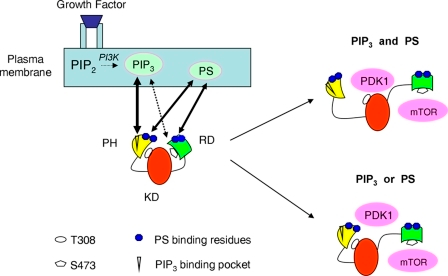
Type II PI4Ks are categorized into PI4KIIα (gene names are italicized and put in brackets PI4K2A) and PI4KIIβ ( PI4K2B) isozymes, while Type III PI4Ks are categorized into PI4KIIIα ( PI4KA) and PI4KIIIβ ( PI4KB) isozymes. The two classes of PI4Ks (type II and type III) are categorized into two distinct groups of isozymes, each based on their structure, which lends itself to their specific spatiotemporal activities ( Figure 2A). The formation of PIP 2 is catalyzed by two sequential phosphorylations, first of which is catalyzed by PI4Ks. This review discusses the upstream modulators that maintain this PIP 2/PIP 3 balance, and downstream mediators that are influenced by it, in the context of neuronal regulation and disease.

Perturbations to the delicate balance between PIP 2 and PIP 3 levels result in aberrant neurodevelopment and neurodegenerative diseases, like autism spectrum disorders (ASD) and Alzheimer’s disease (AD), among others. In the nervous system, both PIP 2 and PIP 3 play essential roles in regulating neuronal morphogenesis, electrical activity, ion channels and neurotransmitters mediated signal transduction, synaptic plasticity, and cytoskeletal remodeling. Conversely, dephosphorylation of PIP 3 into PIP 2 by phosphatase and tensin homolog deleted on chromosome 10 (PTEN) phosphatase also contributes towards maintenance of a PIP 2/PIP 3 homeostasis in the cells ( Figure 1). PIP 3 is generated from PIP 2 by addition of a phosphate on position 3 hydroxyl residue by Class I phosphoinositide 3-kinase (PI3K). The PIP 2 is primarily formed as a result of sequential phosphorylations at position 4 and position 5 hydroxyl residues of PI by PI 4-kinase (PI4K), and PI phosphate kinase (PIPK), respectively. PIP 2 and PIP 3 are constituents of plasma membrane and their precisely regulated abundance changes in response to cell intrinsic and/or extrinsic stimuli. PI 4,5-bisphosphate, and PI 3,4,5-trisphosphate are the focus of this review.

This addition and removal of phosphate groups is selectively regulated by specific phosphoinositide kinases and phosphatases, which are evolutionarily well-conserved. Chemically, the seven distinct species of phosphoinositides are derived from unique phosphorylations of myo-inositol head group of the phosphatidylinositol (PI) at position 3,4 and 5 hydroxyl residues, either singly or in combination. Traditionally, phosphoinositides have been characterized as precursors to secondary messengers for cellular pathways, however, evidence for direct roles for these phospholipids in membrane dynamics is also piling up. Phosphoinositides are membrane phospholipids involved in regulation of key cellular processes that range from cell growth, protein metabolism, membrane remodeling, and trafficking, to cell death. This review will discuss the upstream modulators and downstream effectors of the PIP 2 and PIP 3 signaling, in the context of neuronal health and disease. Any perturbations to the balance between PIP 2 and PIP 3 signaling result in neurodevelopmental and neurodegenerative disorders. PIP 2 and PIP 3 carry out their functions either indirectly through their effectors activating integral signaling pathways, or through direct regulation of membrane channels, transporters, and cytoskeletal proteins.

The activity of PIP 2 and PIP 3 can be regulated through kinases, phosphatases, phospholipases and cholesterol microdomains. The critical balance of these PIPs is crucial for regulation of neuronal form and function. This review focuses on the maintenance of cellular homeostasis of phosphatidylinositol 4,5-bisphosphate (PIP 2), and phosphatidylinositol 3,4,5-trisphosphate (PIP 3). Phosphoinositides are membrane phospholipids involved in a variety of cellular processes like growth, development, metabolism, and transport.


 0 kommentar(er)
0 kommentar(er)
